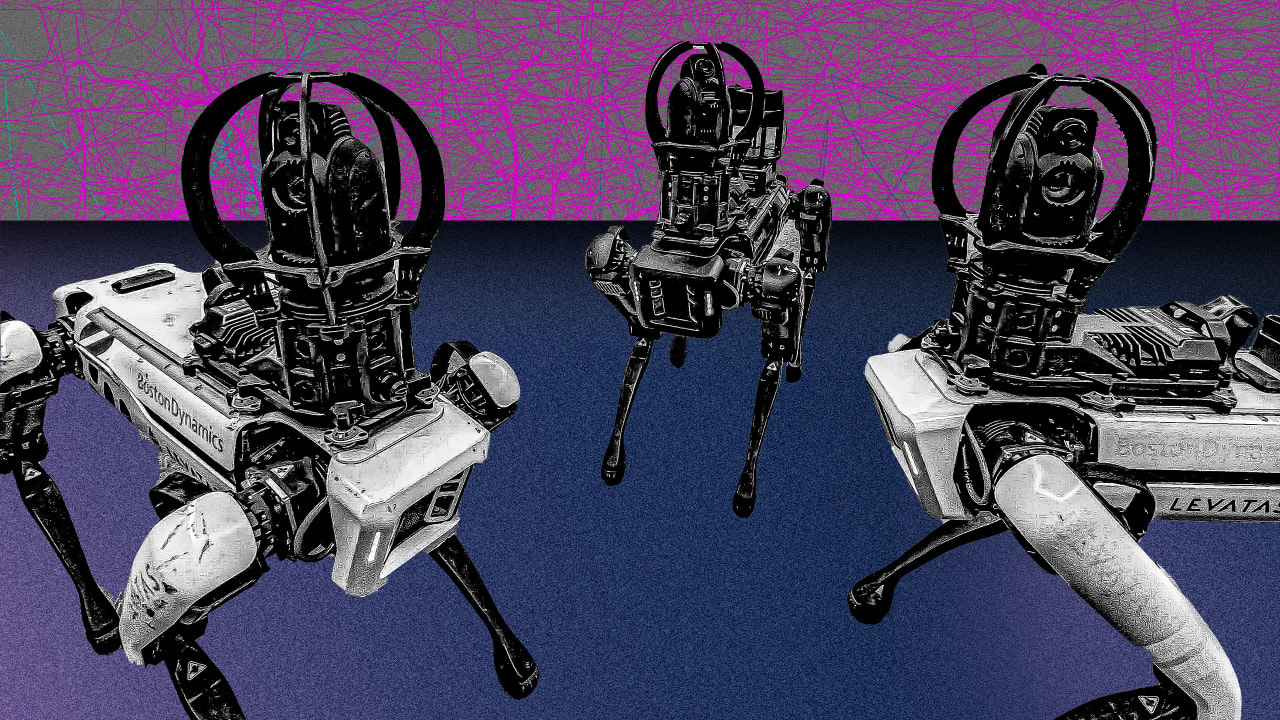In a groundbreaking convergence of robotics and artificial intelligence, scientists and engineers are making strides in integrating the cognitive capabilities of AI models like ChatGPT into robotic bodies. This integration promises to enhance the interaction between humans and robots, making it more intuitive and efficient. Boston Dynamics, a leader in engineering and robotics, has already showcased this potential by incorporating OpenAI’s ChatGPT into Spot, their robot dog, enabling it to perform tasks and respond to commands through natural language processing.
Key Highlights:
- Spot, the robot dog by Boston Dynamics, now utilizes ChatGPT for gathering information and responding to queries in natural language.
- The robot can carry up to 14kg, navigate various terrains, and perform tasks such as thermal inspections and radiation detection.
- Concerns regarding the advanced capabilities of such AI-driven robots have been raised, but proponents highlight their practical applications over apocalyptic scenarios.
Moreover, Microsoft has published a paper outlining design principles for integrating ChatGPT into robotics, emphasizing the model’s potential to revolutionize how robots are controlled and interacted with. The approach aims to make robots more accessible to non-technical users by allowing them to command robots using natural language. This could significantly simplify the programming and operation of robots, making them more versatile and easier to integrate into daily tasks.
The integration of ChatGPT into robotics is not without its challenges, including ensuring the safety and reliability of these AI-driven systems in real-world environments. However, the potential benefits, such as improving efficiency, accessibility, and the user experience, are immense. As this technology continues to evolve, it’s expected to pave the way for more sophisticated and interactive robots, transforming industries and possibly even aspects of daily life.
Further Innovations and Applications:
- Healthcare: In the healthcare sector, robots equipped with AI like ChatGPT could assist in patient care, providing reminders for medication, aiding in diagnostics through interactive discussions, and offering companionship to those in need, thereby reducing the workload on human staff.
- Customer Service: Customer service could see a transformation with robots capable of engaging customers in natural conversations, handling inquiries, and providing assistance or guidance, enhancing the customer experience without the need for extensive human intervention.
- Education: In educational settings, these AI-driven robots could serve as tutors or learning aids, offering personalized educational content, answering questions, and facilitating a more interactive learning experience for students.
- Search and Rescue: Robots with advanced AI capabilities could be deployed in search and rescue missions, navigating through challenging terrains, communicating with survivors, and providing real-time data to rescue teams.
- Home Assistance: For domestic use, these robots could perform a variety of tasks, from managing smart home devices to providing elderly care and companionship, all through voice commands and natural language interactions.
Ethical Considerations and Challenges:
As this technology progresses, it is crucial to address ethical considerations and challenges, including privacy concerns, security risks, and the potential impact on employment. Ensuring these AI-driven robots are developed and deployed responsibly will be key to maximizing their benefits while mitigating risks.
The Future of AI in Robotics:
The partnership between advanced AI models like ChatGPT and robotics heralds a new era in technology, where robots are not just tools but collaborators capable of understanding and interacting with the world in a way that was previously the domain of science fiction. This evolution promises to reshape our interaction with technology, making it more natural and intuitive.
In essence, the merging of ChatGPT’s conversational AI with physical robots represents a significant leap forward in the field of robotics. While the technology is still in its early stages, the possibilities it opens up for future applications are vast and varied. From improving the functionality of service robots to enhancing research tools, the integration of advanced AI models into robotics is a promising development that warrants further exploration and ethical consideration.



















